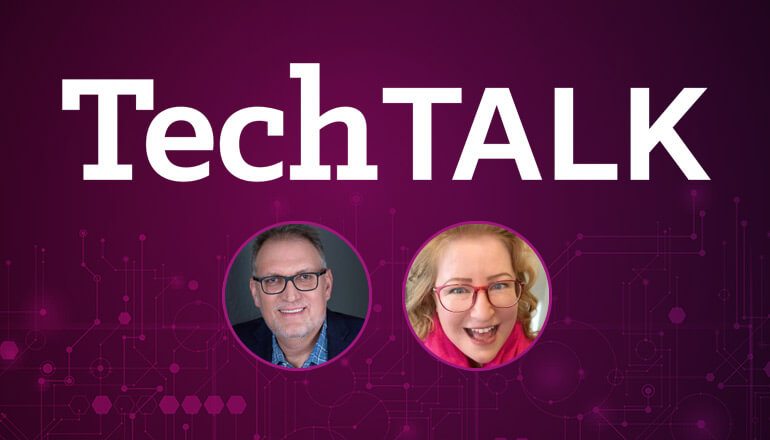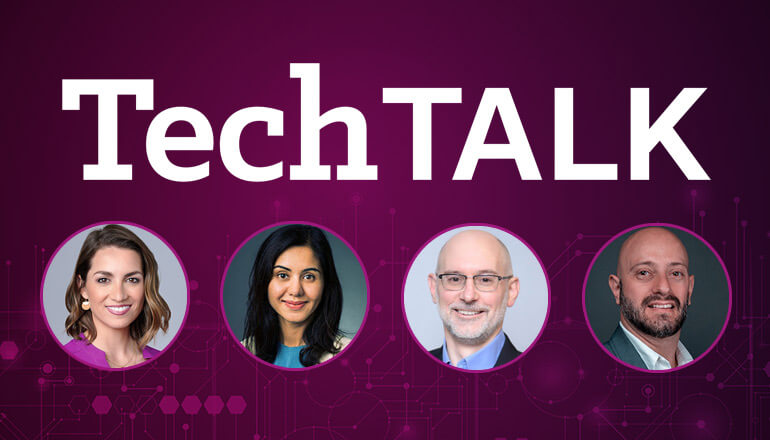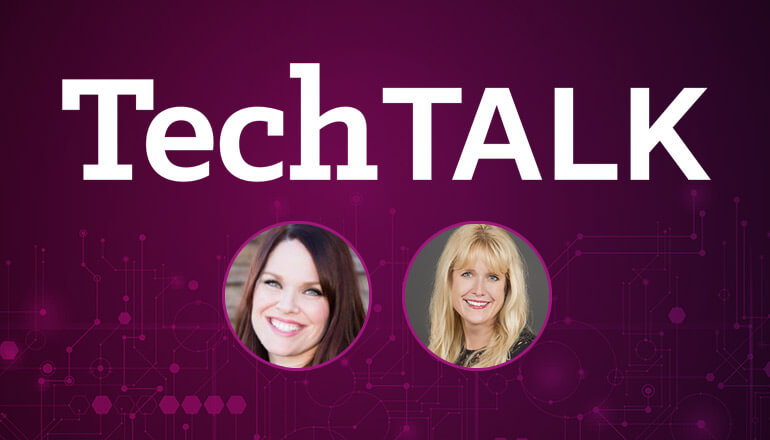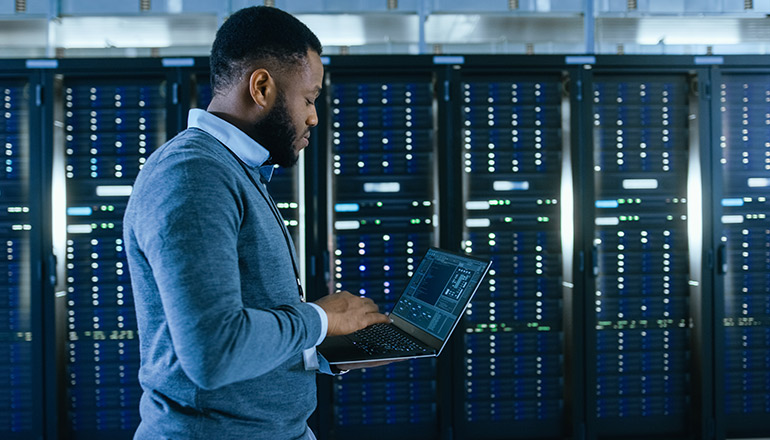Audio transcript:
Next-Gen Connectivity: Building Strong Communities
Published February 13, 2021
BRIAN
Hello, and welcome to another insight tech talk.
My name is Brian Louderback, regional sales manager for Insight Public Sector and today I'll be your host to talk about next gen connectivity.
With us today we have two experts joining us, Jeremy Nelson, director of services for Cloud and Data Center Transformation at Insight and Melissa Asheurst, VP of emerging markets from JMA wireless.
Welcome Jeremy and Melissa, how are you guys doing today?
MELISSA
Good. How are you?
JEREMY
Great, Brian. Thanks for having us.
BRIAN
Hey, now thank you for joining.
So, in the context of connect connectivity kind of just the talk a little bit about what we're going to do today here we're seeing such a huge, strong reliance on having connectivity for all aspects of our lives. Whether that's receiving an education remotely maybe receiving healthcare through like telehealth offerings or just being enabled to work remotely. We definitely know that COVID has definitely played in the role and the importance of all this connectivity.
So, I would just like to take the time today to explore how the importance of connectivity is truly shaping the future of our communities and businesses. So, Melissa, I'm going to start with you. Can you help us understand the technology and what, what is involved here?
MELISSA
Sure. So, I think you're seeing kind of a convergence. So, you have these traditional tools that have always been in the toolbox of Wi-Fi and working with the cellular carriers to get the connectivity you need. Now we're starting to see some really new, exciting things come out that are here to help support the internet of things. And, and when we look at those applications you're talking about 5G, 5G millimeter wave and now we have this great tool that the FCC has given enterprise customers with CBRS where the end user can actually own their own little slice of a cellular network, like a carrier.
BRIAN
Ah, awesome. So how long is, is this new or how long has this been around?
MELISSA
So CBRS has been around for a long time. And it was underutilized spectrum that the FCC has opened up about a year and a half ago for the, the general public to use. And it's really about spurring innovation around 5G in the United States to make us competitive with the rest of the world.
BRIAN
Awesome. Very cool.
So, so Jeremy, let me come and come around to you because I know you have a lot of experiences that Insight working around these types of projects. I'm kind of curious if you can touch point on what you're seeing in how cities or districts are leveraging next gen connectivity.
JEREMY
Yeah, Brian, I mean, this is, this has been probably one of the most exciting kind of engagements for us to work on here at Insight, from a number of different perspectives. So, as we, we, you know, we heard from Melissa some of the great technology advancements that are coming as a part of this whole CBRS 5G push that we're seeing around. you know, the evolution of connectivity is really the way that we think about it. But when we think about what we can do on the humanitarian side of it you highlighted this at the beginning of the Tech Talk was we're seeing connectivity.
And when we, when we think about what our commu, or what our society has evolved into over the past few years, with the introduction of a variety of different things, the internet and we think about smartphones and how we carry connectivity with us everywhere that we go, it's no longer an option. connectivity is, is just as important and just as vital as electricity or water coming into our homes. And a lot of us really have come to take that for granted. And we don't realize that there are so many of our fellow citizens and just members of our communities that have been underserved from a connectivity standpoint. And I think what really kind of came to light as COVID really started to take its, take a firm grasp on our society, was that it really did expose how impactful that was to these underserved communities. You know whether that be from education and helping to build the next generation of leaders and entrepreneurs within our, within our society to, you know, work from home being able to sustain the economies and to help support these families that were or were obviously in need.
So, we're seeing a lot of a number of different use cases. So, first that humanitarian side, being able to use something that's rapidly deployed and has very, very ubiquitous access like CBRS into communities to help provide that that necessary connectivity into those underserved homes to help bridge that gap to help, you know we hear that digital divide, we really are building a bridge over that digital divide with this technology to help get through this immediate pandemic situation. But what's really exciting is that communities are now using this as a springboard into smart cities.
As we think about the way that, again coming back to the humanitarian efforts here we're heavily focused on the hu.. the, the individuals the individual families initially, but really we have a capacity to influence broader economic, as well as environmental change by leveraging smart city technology and connected assets that really encompass an entire infrastructure to help, to help these municipalities really bring next generation of visibility control and environmental benefits to their communities that they serve.
BRIAN
Yeah. Jeremy, I love your passion and the connection to the word transformation, right? I mean, we're seeing transformation occur in our communities, in our backyards and that is so exciting to see. I, I, so I appreciate you going through that. Melissa, you know, let me, come back to you. This sounds complex, it's like this sounds really you know big and macro, right. So, so what are some of the key considerations or attributes to this technology that you're seeing or what you found through kind of some of these projects? I'm just curious.
MELISSA
Sure. So, it can be complicated if you make it complicated. Having the right partners, I think is really what is important in figuring this out. And it all really starts with what Jeremy was talking about. What, what are we looking to accomplish? Not only today but in the future and how do we look at those end user devices and what are those applications? And then we kind of just work our way backward from there in figuring out what we really need to be providing for a solution. And again, that could be any of those tools that are in the toolbox and that's where you need to really leverage strong partners and their knowledge and experience to ensure that you're getting not only what you need for today but for the future as well.
BRIAN
Yeah. Awesome. And so, you know when I see kind of what Jeremy is laying out I am thinking you know, internet of things, devices, sensors and those types of things. So, can you touch point around, you know the security aspects of these types of technologies and what's your opinion on that?
MELISSA
So that's probably one of the biggest bonuses of the CBRS network is you have all of the great flexibility that you would have with a Wi-Fi network, but you have all of the inherent security applications that exist, they are for, for the carriers. So, if you think about, you know hacking into an LTE network, that doesn't happen, this, this isn't a Wi-Fi network, it is extremely secure. And We're actually partnered on several projects right now with the DOD.
So, when you think about, you know high security clearance and needing to protect that data there is no customer that is requiring more security than the DOD right now. So, I think that the average user should feel pretty confident that a huge value of this is, is that security. And when you think about the money spent on all of those security network applications there's a real ROI as well.
BRIAN
Well, yeah, yeah I appreciate you going through that. And, and when you speak government or education right, security has got to be top of mind. So, I appreciate you going through that. Hey, I, I appreciate both of you joining, you know we talked a little bit about the, the connection to purpose. We talked a little bit about the technology as a whole and some exciting things, any other final thoughts that you would want to conclude our session here today?
Jeremy, I'll start with you.
JEREMY
Awesome. Yeah. The big thing that I talk about, I know that I really highlighted a lot of humanitarian and public sector, right? The, the, the overall government municipality use cases for this. But I think one of the exciting things that we see about this evolution, it really is an evolution of connectivity. Like I said before, where we, there are tons of use cases where this goes just beyond that that you know, that government or that that public consumption type of a model, everything to extending access in, in minds or providing connectivity to large scale buildings while they're being constructed.
So, there are a lot of different connectivity use cases that we've had to come up with some kind of bizarre ways to solve whereas we think about this transformation around wireless connectivity, the, the distances the, the way that we can penetrate through different materials with this unique offering in the CBRS 5G space, it really does open a whole world of possibilities way outside of just, you know, serving the, the serving the communities and providing these smart cities.
BRIAN
Yup, yup. Appreciate that Jeremy. And Melissa, you got any final thoughts?
MELISSA
Just don't be intimidated again find the right partners get informed, that spectrum is so valuable. You have, you know, almost the same amount of capacity sitting out there as a carrier's network. And it is there for our use and our development and our innovation as a country. So, don't be intimidated. Find somebody to help you understand it and take advantage.
BRIAN
You, you know, from, from our perspective, you know, from a, from a spectrum standpoint, what, what is the perspective of FCC and CBRS and adoption at the federal level? I know you and your company do a lot around watching and managing that industry as a whole. So, do you have any commentary around kind of where this might go from, from a level of reporting or a gap adopting it within our government?
MELISSA
So, we're, we're currently working on projects where part of it is 5G, part of it is CBRS. So, this is already happening. And we're seeing with the Alliance that, you know that footprint is growing of where we're going to be able to use this spectrum in the future. So, when you think about some of the pilot applications that we're doing here in the United States, right now the thought of being able to advance those applications and technologies for, you know war zones and things like that, become really interesting in what we can do and how we can better support, you know, our, our soldiers here and abroad.
BRIAN
Yeah. Awesome. Well, you know, I guess how you mentioned talk a little about getting the right partners and Melissa I just want to say that our partnership and just say thank you for the partnership. It's been awesome to work with the organization as well as for you. And Jeremy, I appreciate your expertise and your experience and your support and truly creating purpose and impact in our communities the way you have.
So, on behalf of Insight and behalf of being on the Insight Tech Talk we thank you both for joining today.
Thank you, Brian.
[Music]










